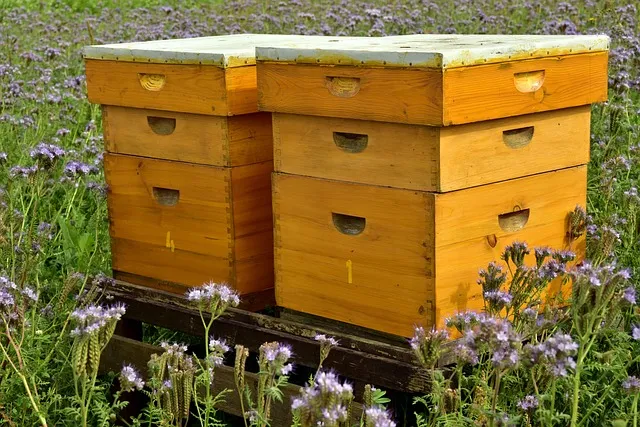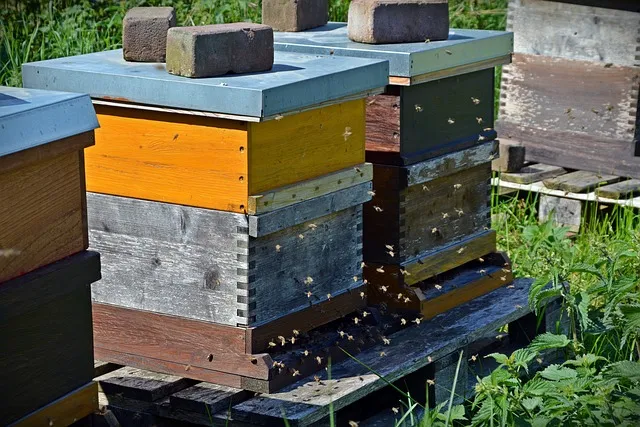What month should I buy bees?
If you are new to beekeeping, you may wonder when is the best time to order or buy your bees. You may also be keen to know the ideal time to start the venture. Well, beekeeping starts in spring when the weather starts to warm up, and flowers start to bloom. It is advisable to start early as possible so that bees can have ample time to gather as much nectar as they can to be established by fall.
A well-established hive has a higher chance of surviving in winter. Their activity level increases with the blooming of flowers and establishes their hive as the season flourishes. Every season brings a behavioral change to bees and other changes in the colony. There are unique challenges, too, for every season. The lovelies are most active in the warm months, but in winter, they focus on keeping warm in their winter cluster as they consume their food reserves. You can buy packaged bees, nucs, or check in your local beekeeping association since it can be way easier and less expensive from your vicinity.
Similar Articles you may like to read –
What is the best bee for beginners?
How much money is a queen bee worth?
What are the easiest bees to take care of?
How many bee colonies should I start with?
What month should I buy bees?
While the process of buying bees is not complicated, it requires good planning. The best time to order your bee packages is in winter for them to be delivered in march or early spring and have them installed on time. It is advisable to order early since the packages may sell out. If you are a new beekeeper, you can enquire from local beekeepers to know the ideal time to order or buy from local suppliers. You should be cautious only to accept the delivery after the weather warms up.
January: As the new year begins, beekeepers start planning for the upcoming season. It’s a time for researching suppliers, updating equipment, and setting goals.
February: Beekeepers gear up for spring by assembling hive equipment and ordering bees. Attending beekeeping workshops or classes can provide valuable knowledge and preparation.
March: Spring arrives, signaling the start of beekeeping activities. Bee packages and nucleus colonies become available, prompting beekeepers to purchase bees for new hives or replacements.
April: With warmer weather and blooming flowers, April is prime time for introducing bees to their new homes. Beekeepers closely monitor hive activity and perform routine inspections.
May: As bees continue to build their colonies and forage for nectar, beekeepers focus on hive management and ensuring adequate resources.
June: Bee populations reach their peak during June, requiring vigilant hive inspections and management to maintain colony health.
July: Bees begin preparing for winter by reducing brood production. Beekeepers monitor honey stores and may provide supplemental feeding if necessary.
August: Assessing hive health and addressing any pest or disease issues is crucial as beekeepers prepare for fall honey harvests.
September: With honey harvesting underway, beekeepers also start winter preparations, including mite treatments and ensuring sufficient food stores.
October: As temperatures drop, beekeepers insulate hives and monitor for pests and diseases. Hive weight is checked, and additional feeding may be provided.
November: Bees cluster inside their hives to stay warm as winter approaches. Beekeepers conduct final checks and preparations for the colder months ahead.
December: Winter maintenance tasks, such as equipment cleaning and repairs, are performed as bee activity decreases. Beekeepers use this time to reflect on the past season and plan for the next.
What are the various ways to buy bees?
You can buy package bees, nucs, an established colony, or catch as a swarm. Packaged bees are the common way of buying bees of all the various options, especially for new beekeepers. A package of bees contains about 3 pounds of bees and a queen: approximately 11000 bees. They are shipped in a screened box and contain a queen in a cage and a can filled with sugar syrup.
Nucs are more costly than packages since they contain an actively laying queen, about five frames of brood, and bees. The bees are at various stages of development. While bees in a package spend the first weeks drawing comb for the brood, bees in a nuc start foraging and making honey right away. Buying an established hive is another way to start a bee colony. The best place to buy is at your local beekeeping association. With a complete hive, you get an established hive, bees( approximately 50,000), an actively laying queen, and frames. For a novice beekeeper, it is hard to perform inspections in a complete hive. It is also hard to tell the queen. You must be cautious to check for parasites and diseases that can ruin your beekeeping dream.
More articles you may like to read –
How long can bees stay in a swarm box?
What is the best bee hive design?
Which direction should beehives face?
How deep should a bee box be?
Essential Tips for buying bees
Choose the bee race you want to raise before placing an order: One of the main factors to consider is the adaptability of the race to your region, especially if you live in a place with extreme temperatures. Italian stock is the most popular.
Search for reputable suppliers: While the price is crucial when choosing a supplier, you should also be keen to buy your bees from a reputable store or beekeeper.
Order your bees early: Waiting until springtime to order your bees may be detrimental. There is usually a high demand for bees since this is the ideal time to start beekeeping.
Get beekeeping supplies before the bees arrive: You should acquire everything you need for beekeeping before the bees arrive. Once they arrive, you should just install them and move on.




